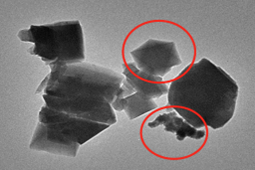BACKGROUND
As groundwater is pumped from water wells, there usually is a localized drop in the water table around the well, called a cone of depression. When there are many wells that have been pumping water for a long time, the regional water table can drop significantly. This is called groundwater mining, which can force the drilling of deeper, more expensive wells that commonly encounter more saline groundwater. Rivers, lakes, and artificial lakes (reservoirs) can also be depleted due to overuse. Some large rivers, such as the Colorado in the U.S. and Yellow in China, run dry in some years. Finally, glaciers are being depleted due to accelerated melting associated with global warming over the past century. According to a 2006 report by the United Nations Development Programmed, 700 million people (11% of the world’s population) lived with water stress. Most of them live in the Middle East and North Africa. By 2025, the report projects that more than 3 billion people (about 40% of the world’s population) will live in water-stressed areas with the large increase coming mainly from China and India. The water crisis will also impact food production and our ability to feed the ever-growing population. We can expect this membrane filtration system can be useful for future global tension and even conflict associated with water shortages and pollution.
SUMMARY OF TECHNOLOGY
Polyamide membrane is common membrane for water treatment application, but the performance of the pristine polyamide is not good enough to apply for industry purpose. We improved its performance by taking advantage of both phase inversion and interfacial polymerization.

The OSU nanofiltration membrane performs well, providing 100% dye and 99.8% protein rejection, 50% total salts rejection, with no cleaning or maintenance requirements. Our membrane will work well in segments of both food and beverage industry and water treatment industry (specifically surface and ground water). Our product has a higher natural longevity and requires no maintenance due to its superior hydrophilicity and anti-fouling property properties. This reduces the periodic cleaning cost and labor time on maintenance and makes them much more user friendly.
POTENTIAL AREAS OF APPLICATION
MAIN ADVANTAGES
- Lower energy consumption
- Increased longevity of the membrane
- Reusable membrane
STAGE OF DEVELOPMENT
- There is a Proof of Concept for this technology.